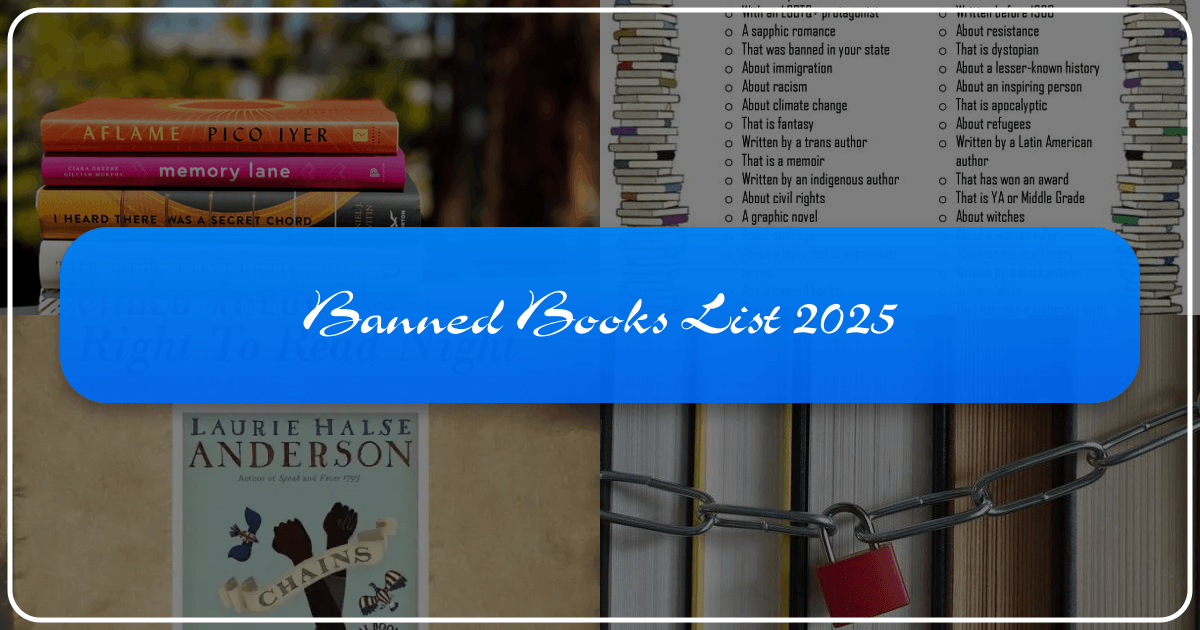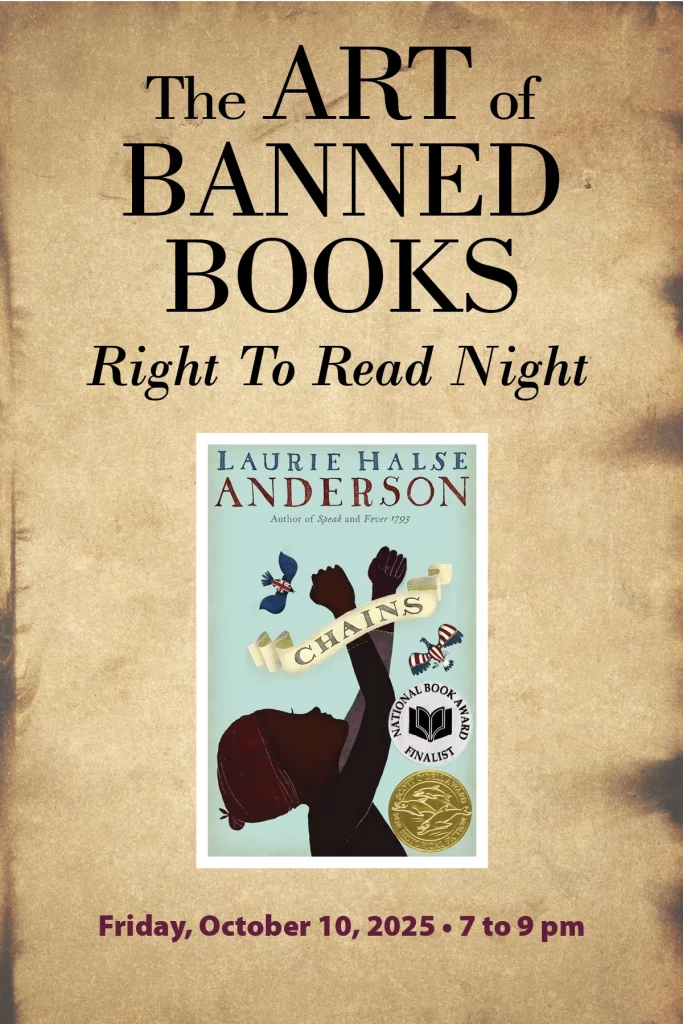Banned Books List 2025: A Deep Dive into Censorship and its Cultural Impact

The year is 2025. Across the United States, a chilling wave of censorship has swept through public schools, removing thousands of books from shelves and sparking a national debate about the freedom to read. This unprecedented level of book banning, documented by organizations like PEN America and the American Library Association (ALA), echoes the dark days of the McCarthy era, raising serious concerns about the future of intellectual freedom and access to diverse perspectives. This comprehensive report delves into the phenomenon of banned books in 2025, examining the genres, authors, and cultural impact of this widespread censorship.
The Scale of the Problem: A National Crisis of Censorship

PEN America’s meticulous documentation reveals a staggering number of book bans in public schools nationwide since 2021. The scale of this censorship is alarming, with nearly 16,000 documented instances, a figure that rivals the height of the Red Scare. This isn’t a localized issue; it’s a national crisis affecting nearly every state. The driving force behind these bans are primarily conservative groups mobilizing efforts to remove books that tackle sensitive topics, particularly those addressing race and racism, LGBTQ+ issues, and mature themes involving sexuality and violence.
The academic year 2023-2024 saw a particularly intense wave of censorship, with PEN America identifying over 10,000 book bans impacting more than 4,000 unique titles. Florida and Iowa emerged as hotspots, accounting for a disproportionate number of bans – approximately 45% and 36%, respectively. This surge in censorship has profound implications for students’ access to diverse perspectives and critical thinking skills.

The Most Frequently Banned Books of 2023-2024
The PEN America Index of School Book Bans highlighted certain titles as particularly frequent targets of censorship. The top ten most banned books of the 2023-2024 school year provide a revealing glimpse into the themes and authors under attack:
- Nineteen Minutes by Jodi Picoult (98 bans): A poignant novel exploring the aftermath of a school shooting. Picoult, a bestselling author known for her emotionally resonant narratives, saw this work targeted for its exploration of complex themes surrounding violence and trauma.

-
Looking for Alaska by John Green (97 bans): A coming-of-age story that delves into themes of love, loss, and identity. Green’s critically acclaimed work has consistently resonated with young adults, but its exploration of sensitive topics rendered it a target for removal.
-
The Perks of Being a Wallflower by Stephen Chbosky (85 bans): This coming-of-age novel explores mental health issues and social alienation among teenagers, making it a target for those seeking to avoid difficult discussions about such issues.
-
Sold by Patricia McCormick (85 bans): A powerful novel detailing the experiences of a young girl trafficked into the sex trade. The realistic depiction of child exploitation made this book a target for those wishing to shield students from such harsh realities.
-
(Tie) Thirteen Reasons Why by Jay Asher (76 bans) and Crank (Crank Series) by Ellen Hopkins (76 bans): Thirteen Reasons Why grapples with suicide and its causes, a topic some found too sensitive for young readers, while Crank depicts the devastating effects of drug addiction. Both titles challenge readers and have generated considerable debate.
-
Identical by Ellen Hopkins (74 bans): This novel features twin sisters navigating difficult circumstances and personal struggles, drawing attention for its inclusion of complex, emotionally-charged subject matter.
-
The Kite Runner by Khaled Hosseini (73 bans): Hosseini’s internationally acclaimed novel, while lauded for its exploration of themes like friendship and redemption, became a target due to its mature themes and depiction of violence.
-
The Handmaid’s Tale by Margaret Atwood (67 bans): A dystopian classic which, through its stark portrayal of an oppressive patriarchal society, resonated deeply with audiences, yet raised eyebrows among those seeking to avoid discussions of gender inequality and reproductive rights.
-
(Tie) Water for Elephants by Sara Gruen (66 bans) and Tricks by Ellen Hopkins (66 bans): Water for Elephants, a popular novel adapted for film and stage, became a target, likely due to its exploration of mature themes. Tricks, by Ellen Hopkins, deals with the exploitation of vulnerable youth, another sensitive area that brought challenges.
Other notable titles banned in significant numbers include various works by Sarah J. Maas, Sherman Alexie, Toni Morrison, and Alice Walker, illustrating a broad attack on literature that encompasses diverse voices and perspectives.
The Authors Under Attack: Silencing Diverse Voices
The targeted nature of these bans reveals a disturbing pattern. Many of the authors whose works are most frequently banned are individuals from marginalized communities – authors of color and LGBTQ+ authors. This targeted censorship is not merely a suppression of books; it is a systematic silencing of diverse voices and experiences. The works of authors like Toni Morrison, Khaled Hosseini, and Ellen Hopkins, among others, provide critical insights into the lived experiences of those who have historically been marginalized and underrepresented. Their removal from school libraries limits students’ opportunities to learn from these perspectives and build empathy.
Beyond the Books: Impacts on Reading, Learning, and Libraries
The repercussions of these book bans extend far beyond the immediate removal of titles. Restricting access to diverse books undermines the educational process, limiting students’ exposure to different perspectives and critical thinking opportunities. The removal of books like Nineteen Minutes or Sold not only deprives students of engaging narratives but also stifles important conversations about violence, trauma, and social justice.
Furthermore, the impact on libraries – both physical and digital – is significant. Public libraries have always been bastions of intellectual freedom, providing access to information for all. The aggressive wave of censorship directly threatens the core mission of these vital community institutions. Digital libraries, while offering potential for wider access, are also vulnerable to similar censorship efforts, threatening the preservation of knowledge and the free exchange of ideas.
The Educational and Cultural Value of Banned Books
The books targeted by these bans offer valuable educational and cultural contributions. Many are acclaimed works of literature that explore complex social issues, historical events, and diverse human experiences. Removing them deprives students of the opportunity to engage with these important texts and develop their critical thinking skills. The suppression of these books also limits the cultural richness and diversity of learning environments. These books serve as crucial tools for fostering empathy, understanding, and a more complete comprehension of the world.
The Cultural Impact: A Threat to Intellectual Freedom
The widespread banning of books represents a serious threat to intellectual freedom and democratic values. The freedom to read is fundamental to a thriving society, as it enables open discourse, critical thinking, and the exploration of diverse perspectives. Censorship, particularly on a scale seen in 2025, undermines these crucial aspects of a democratic society. The targeting of specific themes and authors reflects a concerted effort to control narratives and limit access to information that challenges dominant ideologies.
Banned Books Week 2025 and the Ongoing Fight
The ALA’s Banned Books Week 2025, themed “Censorship Is So 1984. Read for Your Rights,” highlights the continuing struggle to defend the freedom to read. This annual event serves as a crucial reminder of the importance of protecting intellectual freedom and challenging censorship efforts. The ALA, along with organizations like PEN America and the Freedom to Read Foundation, provide valuable resources and support for those fighting to keep books accessible.
The Role of Legislation and Organized Groups
The current wave of book bans isn’t solely the result of isolated complaints. Organized groups and state-level legislation have significantly fueled the censorship efforts. Groups like Moms for Liberty have played a prominent role in promoting book bans across numerous school districts. Simultaneously, laws passed in several states have created a chilling effect, leading to preemptive book removals based on vague definitions of objectionable content. This legislation often lacks clear guidelines, empowering local actors to interpret and enforce these laws in ways that significantly restrict access to books. The consequences are far-reaching, with educators often erring on the side of caution, removing books to avoid potential legal repercussions.
Conclusion: The Urgent Need for Action
The “Banned Books List 2025” is not just a catalog of removed titles; it is a stark warning about the fragility of intellectual freedom. The scale and nature of this censorship demand immediate attention and action. Protecting the freedom to read requires a multi-pronged approach, including challenging restrictive legislation, supporting libraries and educators, and engaging in public discourse about the importance of access to diverse perspectives. The fight to preserve intellectual freedom is a continuous one, and the efforts of organizations like PEN America and ALA are crucial in safeguarding the right to read for all. The future of informed and engaged citizenry depends on it.